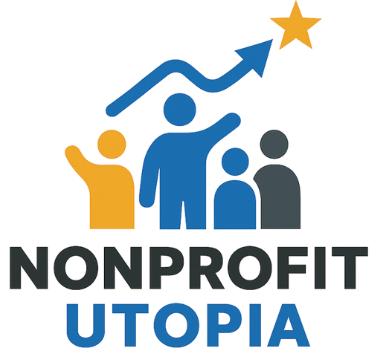“Building a Strong Nonprofit Board: Key Qualities and Common Pitfalls in Selecting Effective Leaders
It is very true that the strength of an organization depends on leadership capabilities of the board and executive staff. Regardless of how skilled the employees or membership, the organization can go no further than the leaders are willing or able to take it. Having said that, what are the qualities one should look at when selecting board members?
Commitment
Board members should be fully committed to the mission, goals and values of the organization, and demonstrate a willingness to fulfill the obligations of being a board member, as required by the organization. They should have the ability to attend meetings and do the “homework” between meetings. Board members should be willing and able to make a financial contribution, whether small or large; volunteer as time permits; and support the organization’s programs and activities. Finally, they should demonstrate the ability and willingness to leverage contacts and resources to the benefit of the organization.
Organizational Fit
Before starting a new organization or recruiting new members to an existing board, it is crucial that the organization’s leadership take stock of its core values. What does the organization stand for? What is most important? What are your beliefs? What are the “absolutes” that will guide every major decision? How will these core principles manifest themselves in the way the organization functions?
No two people will agree on every thing every time. However, to minimize conflict, it is important to make sure the new recruits’ core values are consistent with those that are held by the organization. Prospective board members should also be able and willing to buy into the mission, goals and objectives of the organization. The same is true, regardless of whether the individual is an advisor, board member or employee.
Diversity
Building an effective board of directors is very much like building a sports team. You want to establish a mix of “players” that will bring complimentary skill sets, varied backgrounds and differing perspectives. Depending on your choices, you could end up with a winning combination or a dysfunctional group. Ideally, a well-rounded board will include people with a wide range of skills, including legal, financial, program development and marketing. They will have varied backgrounds in terms of race, ethnicity and profession. Most importantly, they will bring different perspectives without causing confusion.
Where to Find Good Board Members
Recently retired people could potentially make very good board members. Generally speaking, they tend to have a strong level of commitment and work ethic, solid skills and the time to volunteer.
Another potential source for new board members is clients who have successfully completed one or more of the organization’s programs. They will be able to provide valuable insights as to how the organization can position itself in the community, and enhance programs and services. Engaged community residents who may not necessarily be clients could also serve a similar purpose.
Local media people, including news reporters from community newspapers and public relations professionals could prove to be very valuable board members, particularly as the organization develops a corporate image, develops an overall marketing and outreach strategy, and communicates its mission and accomplishments to a broad audience. Most of this work would be done pro bono or at cost for the organization.
Academics–professors, teachers, students and researchers–usually bring with them the ability to leverage the resources of the University or school with which they are affiliated. They are often privy to the latest research that could prove useful as the organization demonstrates the need for its programs and services and evaluates growth opportunities. Academics can also guide the organization’s primary research, provide access to free and low-cost interns and assist in developing funding proposals for the organization.
Finally, a number of corporations, civic and professional associations provide executives on loan, who come highly recommended by their sponsoring organizations. In many instances, the nonprofit organization will have the opportunity to evaluate the performance of the board volunteers sourced through these programs. This provides an added incentive for the board volunteer to perform to the fullest.
Common Board Development Mistakes
There are five mistakes organizations should avoid when building a board:
- Selecting board members based on friendship, without regard to level of commitment, core values or skills the prospective members bring.
- Selecting family members unless the organization is intended to be a family-run foundation
- Allowing prominent people to come onto the board with the understanding that they won’t be able to make meetings
- Approaching your “dream” candidates while your organization is still in developmental stages (unless the other board members are equally prestigious)
- Inviting someone to come onto the board solely because of name recognition




